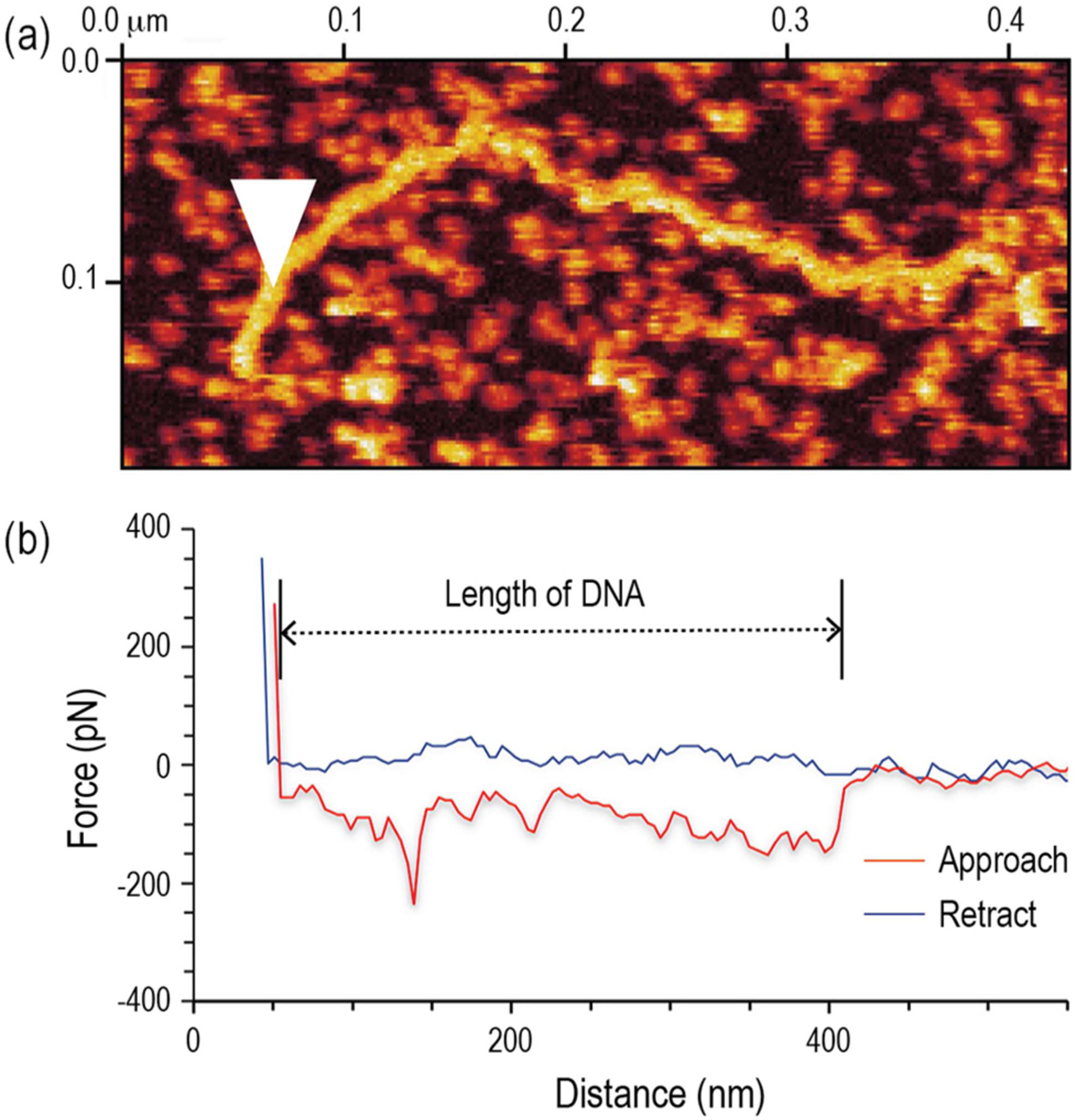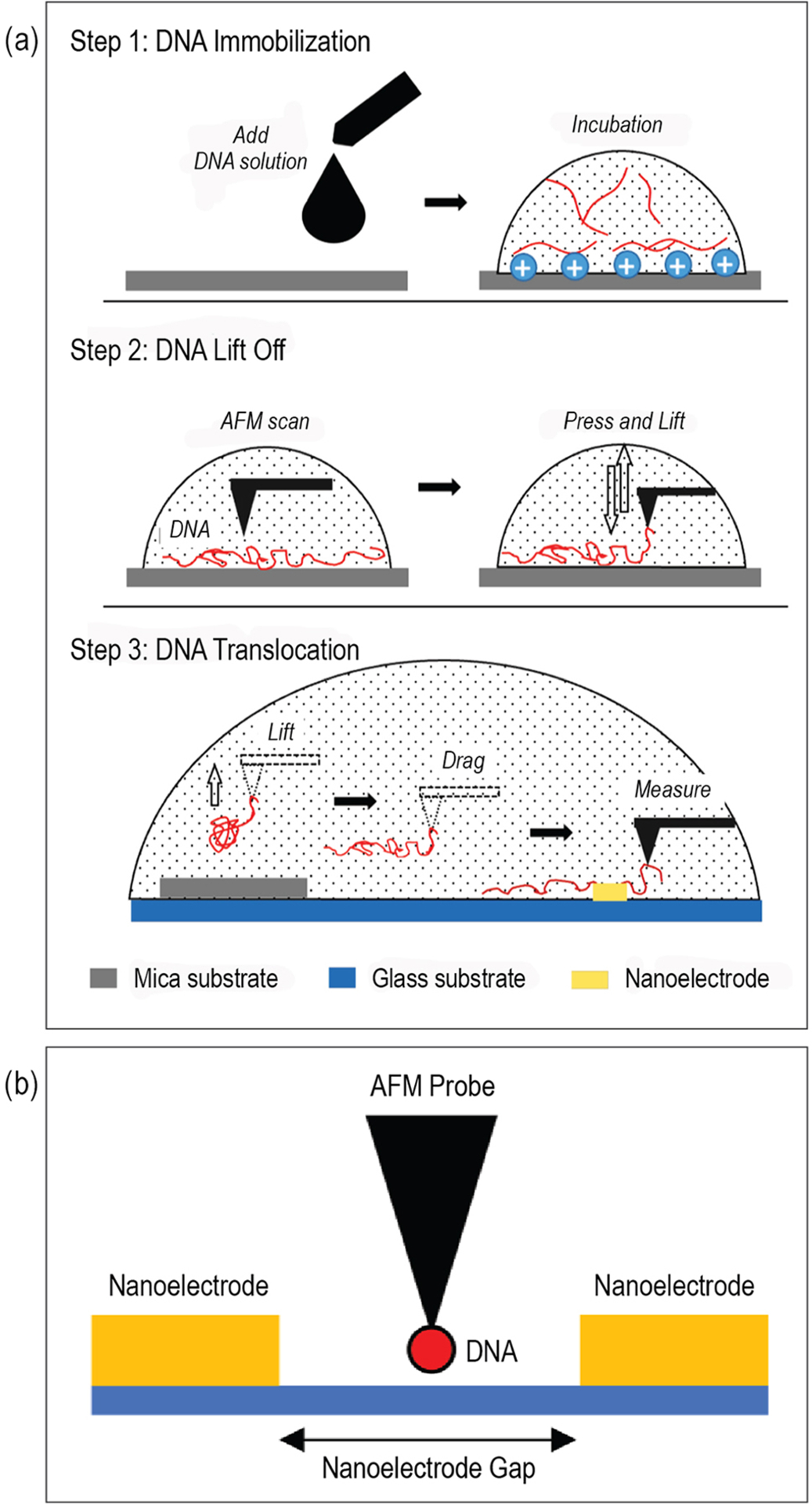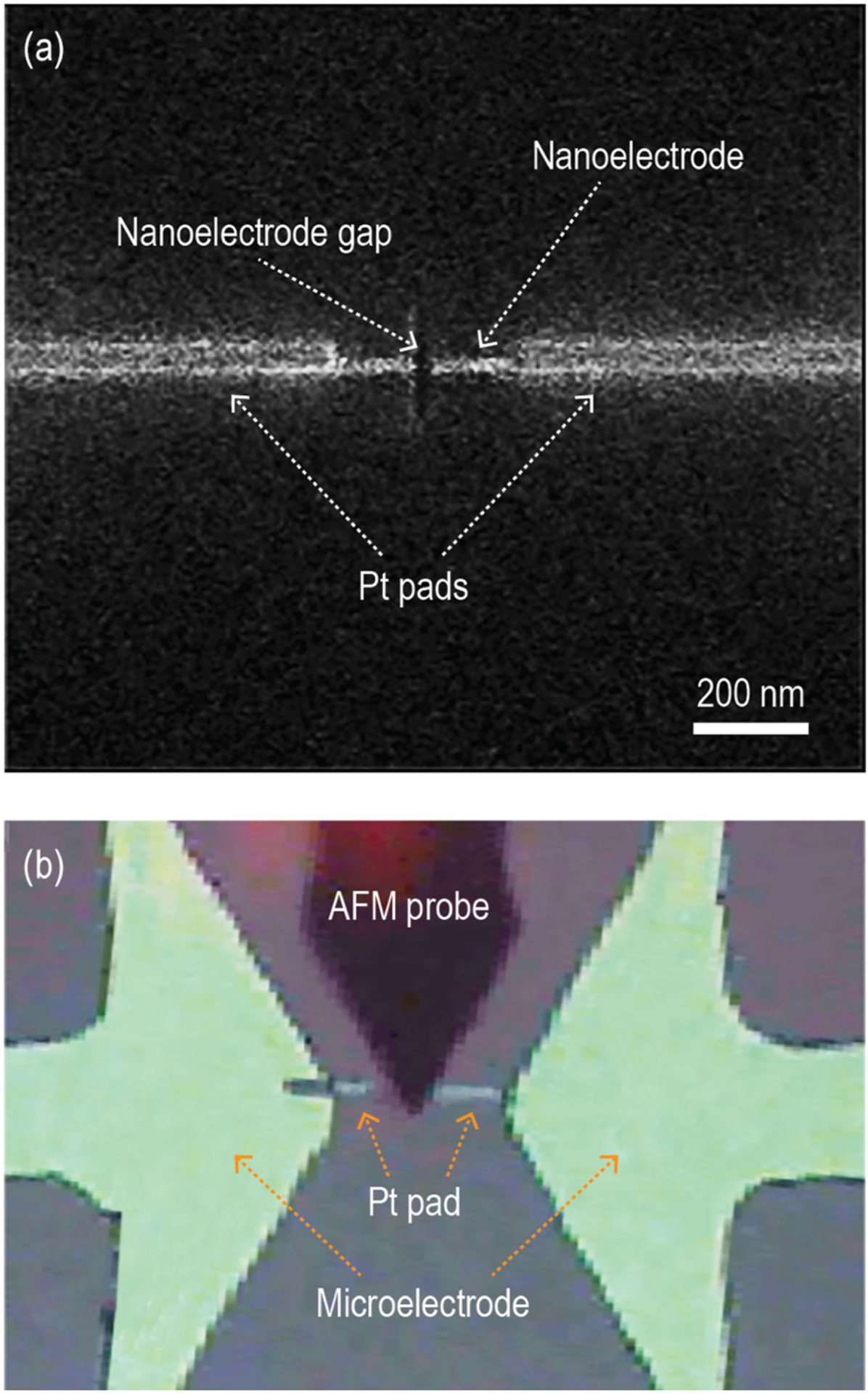Single DNA Translocation and Electrical Characterization Based on Atomic Force Microscopy and Nanoelectrodes
IF 1.9
Q3 MATERIALS SCIENCE, MULTIDISCIPLINARY
引用次数: 0
Abstract
Precision DNA translocation control is critical for achieving high accuracy in single molecule-based DNA sequencing. In this report, we describe an atomic force microscopy (AFM) based method to linearize a double-stranded DNA strand during the translocation process and characterize the electrical properties of the moving DNA using a platinum (Pt) nanoelectrode gap. In this method, λDNAs were first deposited on a charged mica substrate surface and topographically scanned. A single DNA suitable for translocation was then identified and electrostatically attached to an AFM probe by pressing the probe tip down onto one end of the DNA strand without chemical functionalizations. Next, the DNA strand was lifted off the mica surface by the probe tip. The pulling force required to completely lift off the DNA agreed well with the theoretical DNA adhesion force to a charged mica surface. After liftoff, the captured DNA was translocated at varied speeds across the substrate and ultimately across the Pt nanoelectrode gap for electrical characterizations. Finally, finite element analysis of the effect of the translocating DNA on the conductivity of the nanoelectrode gap was conducted, validating the range of the gap current measured experimentally during the DNA translocation process.



基于原子力显微镜和纳米电极的单DNA易位和电学表征
精确的DNA易位控制是实现单分子DNA测序高精度的关键。在本报告中,我们描述了一种基于原子力显微镜(AFM)的方法,在易位过程中线性化双链DNA链,并使用铂(Pt)纳米电极间隙表征移动DNA的电学性质。在这种方法中,λ dna首先沉积在带电云母衬底表面并进行地形扫描。然后鉴定出适合易位的单个DNA,并通过将探针尖端压在DNA链的一端而不进行化学官能化,以静电方式连接到AFM探针上。接下来,DNA链被探针尖从云母表面提起。完全剥离DNA所需的拉力与理论上的DNA粘附在带电云母表面的力一致。升空后,捕获的DNA以不同的速度在衬底上易位,最终穿过Pt纳米电极间隙进行电特性表征。最后,对DNA易位对纳米电极间隙电导率的影响进行了有限元分析,验证了DNA易位过程中实验测量的间隙电流范围。
本文章由计算机程序翻译,如有差异,请以英文原文为准。
求助全文
约1分钟内获得全文
求助全文

 求助内容:
求助内容: 应助结果提醒方式:
应助结果提醒方式:


